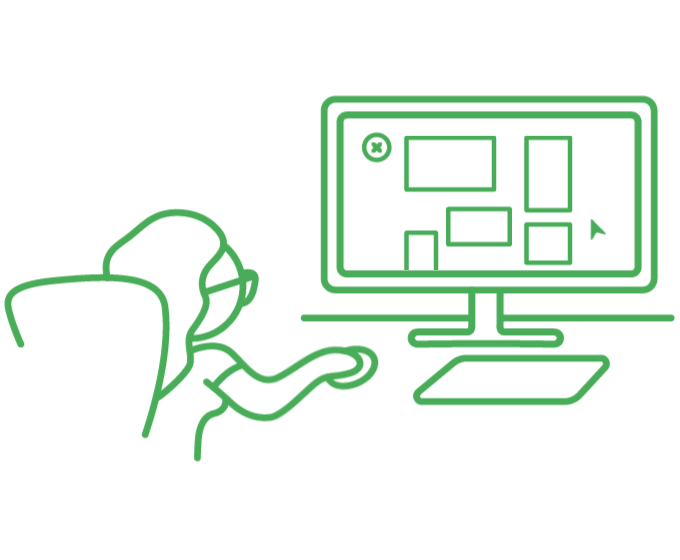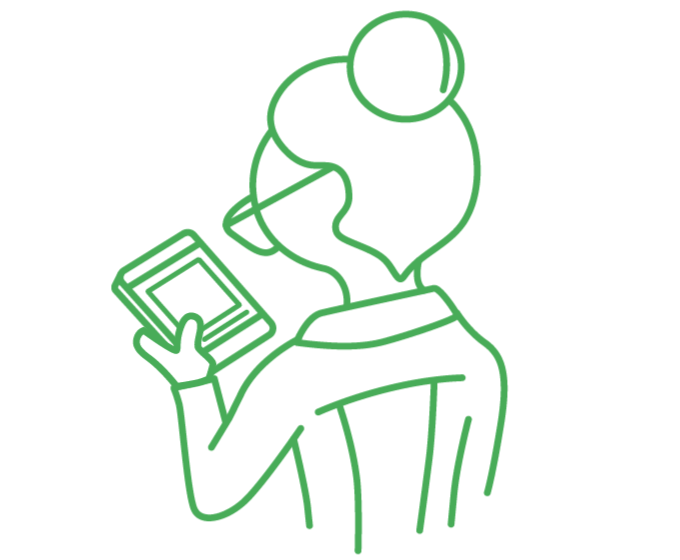17 Things About Design I Learned at Online Optimism

Starting as a design specialist for Online Optimism, I set a goal to learn as many new things about graphic and user interface (UI) design as I could. Each week presented new projects and new challenges that ultimately helped me grow.
If you’re looking to learn more about design and sharpen your skills, check out these 17 things about design that I learned at Online Optimism.
1. Organization methods for social media posts
Consistent, quality graphics and content are essential for a successful Instagram aesthetic. But what is the best way to keep track of what graphics need to be made? When I worked with the social media team, we created grid calendars where we could add copy, hashtags, graphics, and accounts to tag for each post. This keeps everything clear and organized, and it allowed us to plan weeks or even months ahead.
2. You have file size constraints
The Internet is an endless pit, until you attempt to release an ad campaign where the files exceed the maximum KB. Different digital ad types require different file sizes. One of the most important technical abilities that I learned as a specialist was how to optimize the best looking visuals to match with a file’s size and dimensions. In some cases, I would have to carefully consider how many images, graphic elements, and texts to include in an ad.
3. But…there are ways to work around them
Although some digital ads may require smaller file sizes, there are ways to keep your ads under the size limit without having to skimp out on your beautifully designed graphics. One tool we use is ImageOptim to help compress files. However, there are also a few ways to compress files in Photoshop as well as some free tools on the Internet that make it easy to convert file types.

4. Design your ads efficiently in Photoshop
Not only does Photoshop offer a great deal of control over your visuals, but also it allows for quick exports of many files at once. For every ad set I created, I would set up my Photoshop document with multiple smart objects that would become my ads. From there, I could distribute my graphic assets, make presets, and export all of my ads at the same time.
5. Designing ads for geotargeting campaigns
At Online Optimism, I was introduced to the different types of digital ads. Geotargeting ads promote content based on the user’s location. For example, some companies may want to draw attention to their campaigns with geotargeting ads during festivals and other events in New Orleans. In these cases, it’s important to take into account both the audience within the area that might be exposed to the campaign as well as the company’s values. Different demographics and regions can evoke different emotions from users. It’s important to carefully consider what graphics and imagery to include, but also how to attract these users to the product or service being advertised.
6. How to design for remarketing campaigns vs a rebrand
Remarketing is not the same as rebranding. Remarketing requires an existing brand identity to be best optimized for new ad campaigns. For remarketing ads, I would brainstorm different ways to combine a company’s visual assets with new methods of organization and hierarchy. However, with rebranding, you have a little more creative freedom, although usually companies prefer their new aesthetic not to stray too far from the original.
7. Use WhatFont!
WhatFont is a convenient little tool to add to your browser. Whatfont allows you to hover over any piece of text on a webpage and retrieve the typeface being used. This tool came in handy most when I created remarketing campaigns and gathered visual information to promote a business.
8. How to use logos when you don’t have access to the files
Sometimes you may have to pull a logo as a png file from a website or even take it from a text document. In these cases, I learned how to retrieve the highest possible resolution of a logo, bring it into Photoshop, adjust it, recolor it, clean it up, and then use that new version to apply to my work.
9. I have become an expert GIF maker
GIFs are increasingly becoming an eye-catching form of advertisement and social engagement, so it can be a great technical asset to add under your belt. Although I have created several animations for my design classes, at Online Optimism I gained experience with creating GIFs for commercial purposes.
While I learned several new things about design on a technical level, I also learned a lot about workflow and developing myself as a designer:
10. I wrote more than I sketched
Don’t get me wrong, I still sketched A LOT. But I found writing everything that I possibly could down to be very helpful. Personally, I find it difficult to work solely digitally and prefer to have some form of tangible mediums to work with. Copying down instructions and writing out all of my ideas, plans for the week’s projects, and to-do lists often improved my workflow and time management.

11. I got first-hand experience seeing what interacts well on social media
I kept up with the social media accounts that I produced graphics for and kept an eye out for what trends were performing well and which ones weren’t. Generally, I would say that vibrant graphics that include some form of illustration with large text tend to attract more likes and comments than ones that don’t.
12. How to avoid falling into patterns
After you’ve already created several series of digital ads for different businesses, you might find it easy or even tempting to reuse common types of graphic elements and placement across different ad campaigns. However, this should be avoided if your creations are looking too similar. If I caught myself doing this, I learned to remind myself to take a minute to brainstorm again what visuals I could translate from the company’s brand identity.
13. How designing for school compares to designing in the corporate space
Designing for school is different from designing professionally, but I wouldn’t say that one is more difficult than the other. There are things that school prepares you for—knowing the shortcuts and interface of Adobe programs, understanding typography, practicing concepting and creating brand identities, etc. Working hard and putting forth your best effort as a design student is what is going to allow you to transition to the workplace in the easiest fashion. However, the professional workplace is unlike school in that turnaround time may be much faster, but the amount of work that needs to be produced and finalized is disproportionate. In school, you may be expected to produce 50 if not hundreds of iterations before a final is developed. Although you should be brainstorming and working with multiple iterations when creating work for clients, school helps to strengthen these creative muscles so that you can really power through in the workplace.
14. How to use animation to engage viewers on social media
Engaging and exciting content for social media platforms, such as Instagram and Facebook, most often includes some form of motion graphics. But there are certain aspects to motion graphics for social that ought to be optimized. For one, there should always be something on the screen that’s moving. Scrolling across an animated ad that looks engaging but has awkward moments of stillness or poor timing is annoying and often ignored. Also, motion graphics frequently need to be treated a little more carefully than static graphics in terms of time spent critiquing the motion. If not enough time is spent on creating clean, fluid-moving motion, then the rushed process is very noticeable.
15. Hierarchy depends on the audience
There are standard design principles when it comes to hierarchy: large, bold text will be read first; smaller, skinnier text will be read second; and the placement of these texts along with other graphics and imagery also plays a part in how the design is read. In my experience with working on ads for different clients during my internship, I would argue that what should be read first depends on the client’s intended audience. While some clients may want a call to action or tagline read first, other clients may rely heavier on imagery. For example, a cosmetology office may want to showcase a large image of a face with glowing skin and white teeth to attract potential clientele rather than displaying mostly text.
16. How to make design pitch books more extensive
Pitch books provide clients with a plan of proposed services to get a better understanding of what deliverables will be made and what they could look like. I learned ways to make pitch books more extensive as a specialist. Some of the things I learned include displaying multiple versions of a logo and how each interacts with different placements, fonts, border distances, and background colors. Part of a good pitch book also involves providing the client examples of which colors to combine and which to avoid as well as how to use the logo files for future reference.
17. Thinking commercially first
Online Optimism enhanced my process to brainstorm for design concepts and aesthetics with a commercial production in mind. I feel that I have a greater sense not only of visual elements that lend a professional and sophisticated aesthetic to businesses, but also how to optimize those elements for legibility as well as easy and intuitive navigation for web pages.
Apply for the Specialist Program
Are you looking for an internship experience similar to mine? Want to see what a design agency can do for its clients? Learn more about Online Optimism’s Specialist Program and apply today!
